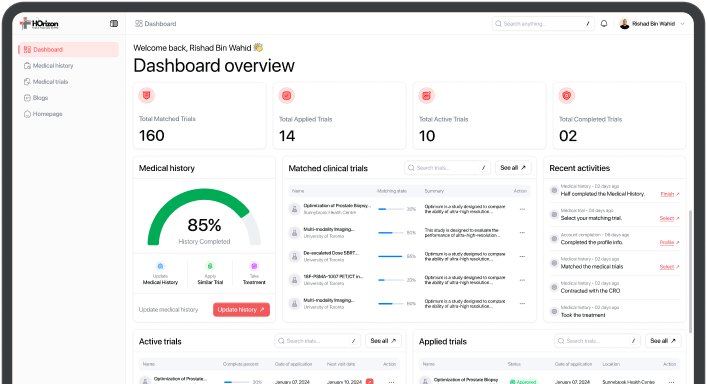18F-PSMA-1007 PET/CT in Prostate Cancer – Access Trial 2022 to 2028
Contact information
Jonathan T Abele, MD
University of Alberta
Edmonton, Alberta, Canada, T6G 2R3
Basic information
N/A
N/A Age
2800 Enrollment
Trial Details
Brief Summary
A two-centre prospective cohort phase III study of 18F-PSMA-1007 PET/CT imaging in specific patient populations: Adults patients (≥18 years old) with a history of radical prostatectomy for treatment of prostate cancer, and a serum prostate specific antigen (PSA) ≥ 0.2 mcg/L Adult patients with a history of radiotherapy, cryotherapy, or brachytherapy for treatment of prostate cancer, and a serum PSA progressively rising to ≥ 2 mcg/L (minimum two samples) OR a serum PSA doubling time of < 9 months Adult patients with a history of biopsy-proven prostate cancer and high-risk features for metastatic disease prior to treatment with radical prostatectomy, radiotherapy, cryotherapy, or brachytherapy. High-risk features include a Gleason score ≥ 7, serum PSA ≥ 20 mcg/L, OR minimum clinical T-stage T2c Adult patients who do not meet criteria 1-3 but in whom a 18F-PDAM-1007 PET/CT scan is expected to provide clinical benefit as determined by a Urologist, Radiation Oncologist, Medical Oncologist, or Nuclear Medicine physician (licensed in Alberta) The safety of the investigational 18F-PSMA-1007 tracer will be evaluated in 3 ways: The participant will be screened for adverse effects immediately post-injection The participant will be screened for adverse effects immediately after the scan (approximately 2.5 hours after tracer injection) The participant will be provided an information sheet and contact information for self-reporting of any delayed adverse events (1-7 days post injection) The incidence of and activity of non-specific bone lesions will be quantified and evaluated as follows: All lesions categorized as non-specific bone lesions (PSMA-1007 SUVmax > 2.5 but no corresponding lesion on CT) will be recorded The SUVmax and anatomic location will be recorded for each lesion (max 5 per participant) Recorded lesions will be evaluated a minimum of 1 year post-scan to determine whether they are benign or malignant based on previously published reference standard criteria (Arnfield et al., 2021) Equivocal lesions will be considered unevaluable and will be excluded from assessment of accuracy
Official Title
18F-PSMA-1007 PET/CT in Prostate Cancer - Access Trial 2022 to 2028
Selection Criteria
Eligibility Inclusion Criteria
-
- Adult participants (≥ 18 years old) with a history of radical prostatectomy for treatment of prostate cancer, and a serum prostate specific antigen (PSA) ≥ 0.2 mcg/L
- Adult participants with a history of radiotherapy, cryotherapy, or brachytherapy for treatment of prostate cancer, and a serum PSA progressively rising to ≥ 2 mcg/L (minimum two samples) OR a serum PSA doubling time of < 9 months
- Adult participants with a history of biopsy-proven prostate cancer and high-risk features for metastatic disease prior to treatment with radical prostatectomy, radiotherapy, cryotherapy, brachytherapy, or other similar therapy. High-risk features include a Gleason score ≥ 7, serum PSA ≥ 20 mcg/L, OR minimum clinical T-stage T2c
- Adult patients who do not meet criteria 1-3 but in whom a 18F-PSMA-1007 PET/CT scan is expected to provide clinical benefit as determined by a Urologist, Radiation Oncologist, Medical Oncologist, or Nuclear Medicine physician (licensed in Alberta)
Eligibility Exclusion Criteria
-
- Unable to obtain consent
- Weight > 225 kg (weight limit of PET/CT scanners)
- Unable to lie flat for 30 minutes to complete the PET/CT imaging session
- Lack of intravenous access
- History of allergic reaction to 18F-PSMA-1007
- Residence outside the Province of Alberta, Northwest Territory, or Yukon Territory (Canada)
- Less than 18 years old
NOTE: Androgen deprivation therapy (ADT) is NOT a contraindication to participation
